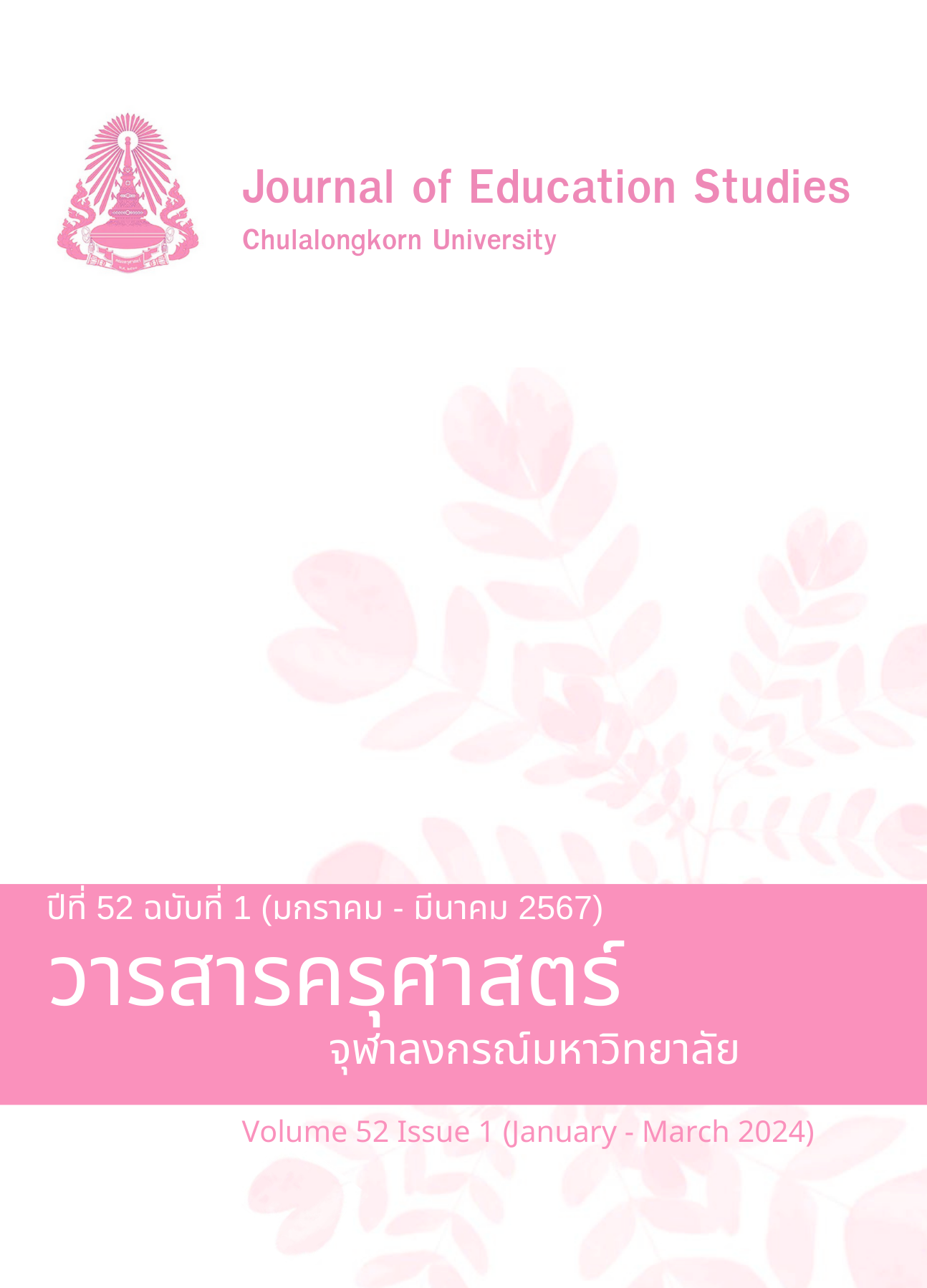Learning Management Based on Murdoch Integrated Approach (MIA) with Graphic Organizers to Develop English Reading Comprehension Ability of Grade 3 Students
DOI:
https://doi.org/10.14456/educu.2024.13Keywords:
learning management, Murdoch integrated approach (MIA), graphic organizer, English reading comprehension ability, grade 3 studentAbstract
The purposes of this research were to: 1) compare the students’ English reading comprehension abilities between before and after learning management, 2) compare the students’ English reading comprehension abilities after learning management with the criteria of 70%, and 3) study the students’ satisfaction on learning management based on Murdoch Integrated Approach (MIA) with graphic organizers. The sample group is comprised of 26 grade 3 students at Thesaban 3 (Wat Sala Huayang) in the first semester of the academic year 2023, by using cluster random sampling. The research instruments consisted of 1) 5 lesson plans in English subject, unit 2 My hometown, the topic is Places, 2) an English reading comprehension ability test, 4 Multiple choices, 20 questions. and 3) the students’ satisfaction questionnaire, It is a roughly 5-point Likert scale. The statistics used in the data analysis were mean (M), standard deviation (SD), and t-test.
The results of this research showed that: 1) the English reading comprehension abilities of students after learning management based on Murdoch Integrated Approach (MIA) with graphic organizers was higher than before learning management with statistically significant at the .05 level, 2) the English reading comprehension abilities of students after learning management was higher than the criteria of 70% with statistically significant at the .05 level, and 3) the students’ satisfaction on learning management was at a high level.
References
ภาษาไทย
กระทรวงศึกษาธิการ. (2551). หลักสูตรแกนกลางการศึกษาขั้นพื้นฐาน พุทธศักราช 2551. โรงพิมพ์ชุมนุมสหกรณ์การเกษตรประเทศไทยจำกัด
ทิศนา แขมมณี. (2563). ศาสตร์การสอน: องค์ความรู้เพื่อการจัดกระบวนการเรียนรู้ที่มีประสิทธิภาพ (พิมพ์ครั้งที่ 24). สำนักพิมพ์จุฬาลงกรณ์มหาวิทยาลัย.
ประพันธ์ศิริ สุเสารัจ. (2551). การพัฒนาการคิด (พิมพ์ครั้งที่ 2). 9119 เทคนิคพริ้นติ้ง.
รฐา แก่นสูงเนิน. (2558). การพัฒนาการเรียนการสอนอีเลิร์นนิงวิชาภาษาอังกฤษเพื่อการท่องเที่ยวตามแนวการสอนอ่านแบบบูรณาการของเมอร์ด็อค (MIA) ของนักเรียนชั้นมัธยมศึกษาปีที่ 4 โรงเรียนวัดธรรมจริยาภิรมย์.
[การค้นคว้าอิสระหลักสูตรปริญญาศึกษาศาสตรมหาบัณฑิตสาขาวิชาเทคโนโลยีการศึกษาภาควิชาเทคโนโลยีการศึกษา, มหาวิทยาลัยศิลปากร]. http://ithesis-ir.su.ac.th/dspace/handle/123456789/
?mode=full
โรงเรียนเทศบาล 3 (วัดศาลาหัวยาง). (2564). แบบบันทึกผลการพัฒนาผู้เรียนรายวิชาภาษาต่างประเทศ. โรงเรียนเทศบาล 3 (วัดศาลาหัวยาง).
วราภรณ์ พูลสวัสดิ์. (2564). การจัดการเรียนรู้แบบ MIA เพื่อพัฒนาความสามารถในการอ่านเพื่อความเข้าใจและการคิดวิเคราะห์วิชาภาษาอังกฤษของนักเรียนชั้นประถมศึกษาปีที่ 5 โรงเรียนสาธิต “พิบูลบำเพ็ญ” มหาวิทยาลัยบูรพา. [วิทยานิพนธ์หลักสูตรการศึกษามหาบัณฑิต, มหาวิทยาลัยบูรพา]. http://ir.buu.ac.th/dspace/bitstream/1513/249/1/62920227.pdf
วัสมน กฤษกลาง. (2563). การศึกษาความสามารถในการอ่านจับใจความและทักษะการคิดวิเคราะห์ของนักเรียนชั้นมัธยมศึกษาปีที่ 3 โดยวิธีการสอนอ่านแบบบูรณาการของ Murdoch (MIA) ร่วมกับแผนผังกราฟิก. วารสารราชพฤกษ์. 18 (3), 112-119.
ภาษาอังกฤษ
Bernhardt, Traci Michelle. (2010). Using graphic organizers to enhance reading comprehension (UMI No. 1481092) [Master’s thesis, University of California, Davis]. ProQuest Dissertations Publishing.
Murdoch, G.S. (1986). A More Integrated Approach to the Teaching of Reading. English Teaching Forum, 34 (1), 9-15.
Downloads
Published
How to Cite
Issue
Section
License

This work is licensed under a Creative Commons Attribution-NonCommercial-NoDerivatives 4.0 International License.




